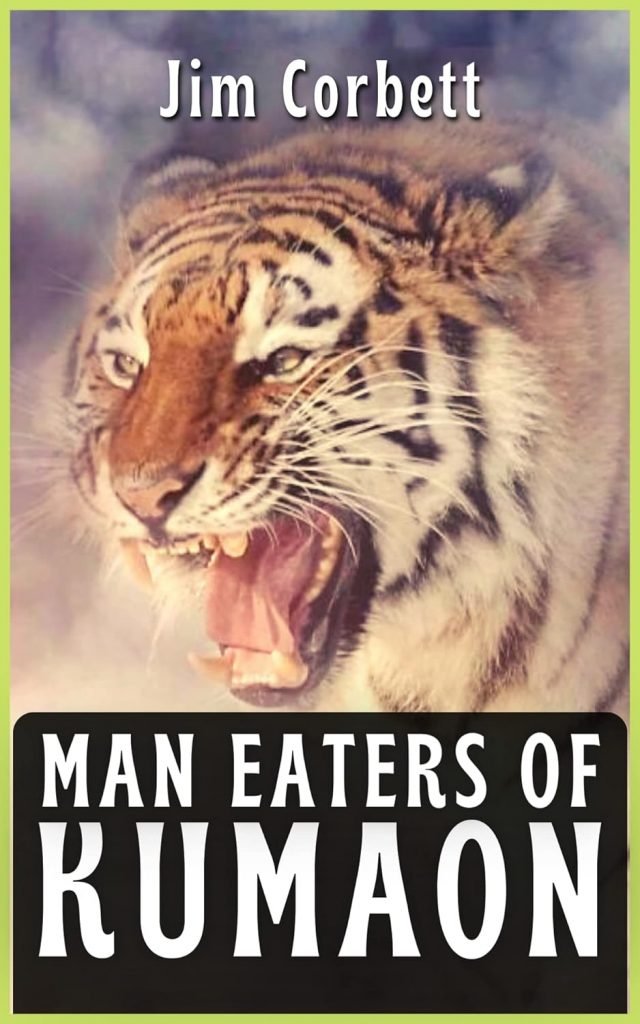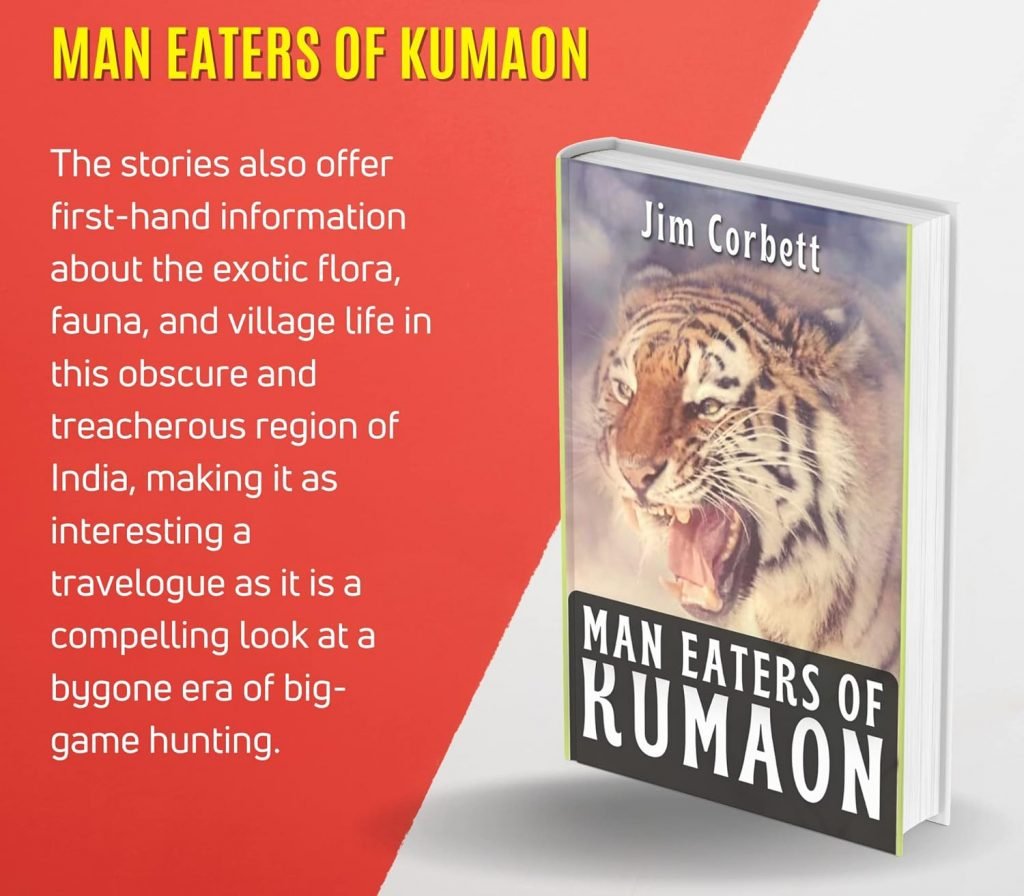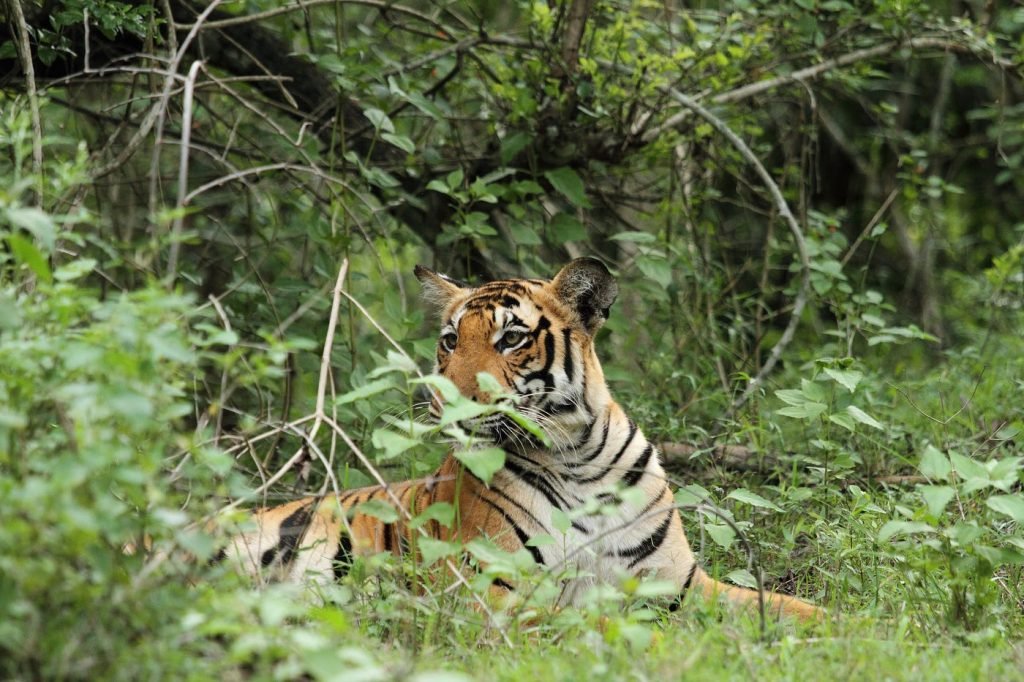
MAN EATERS OF KUMAON
JIM CORBETT
Man-Eaters of Kumaon is a 1944 book written by hunter-naturalist Jim Corbett. It details the experiences that Corbett had in the Kumaon region of India from the 1900s to the 1930s, while hunting man-eating Bengal tigers and Indian leopards. One tiger, for example, was responsible for over 400 human deaths. Man-Eaters of Kumaon is the best known of Corbett’s books, and contains 10 stories of tracking and shooting man-eaters in the Indian Himalayas during the

early years of the twentieth century. The text also contains incidental information on flora, fauna and village life. Seven of the stories were first published privately as Jungle Stories. Contents: Author’s note (causes of man-eating), The Champawat Maneater, Robin, Chowgarh Tigers, The Bachelor of Powalgarh, The Mohan Maneater, Fish of my dreams, The Kanda Maneater, The Pipal Pani tiger, The Thak Man-eater, Just Tigers.
Edward James Corbett CIE VD (1875-1955) was a British hunter, tracker, naturalist, and author who hunted a number of man-eating tigers and leopards in India. He held the rank of colonel in the British Indian Army and was frequently called upon by the Government of the United Provinces of Agra and Oudh, now the Indian states of Uttar Pradesh and Uttarakhand, to kill man-eating tigers and leopards that were preying on people in the nearby villages of the Kumaon-Garhwal Regions. He authored Man-Eaters of Kumaon, Jungle Lore, and other books recounting his hunts and experiences, which enjoyed critical acclaim and commercial success. He became an avid photographer and spoke out for the need to protect India’s wildlife from extermination.
INTRODUCTION
HESE jungle stories by Jim Corbett merit as much popularity and as wide a circulation as Rudyard Kipling’s Jungle Books Kipling’s Jungle Books were fiction, based on great knowledge of jungle life; Corbett’s stories are fact, and fact is often stranger than fiction. These stories should prove of entrancing interest to all boys and girls who like exciting yarns; they should be of equal interest to all who take any interest in the wildlife of the jungle; they should prove of great value to any genuine sportsman who wishes to earn by his own efforts the credit of shooting a tiger; they will be of interest even to the so-called sportsman who feels some pride in killing a tiger when all that he has done is to fire straight from a safe position on a machan or on the back of a staunch elephant, when all the hard work involved in beating up a tiger to his death has been done by others.
Corbett’s description of his campaign against the man-eaters of the Kumaon Hills shows the qualities that a successful shikari needs, physical strength, infinite patience, great power of ob- servation and power not only to notice small signs but also to draw the right inference from those signs. To these must be added great courage. I will not make quotations from the book to prove this statement. Read the book for yourself; you will soon see the truth of it; these qualities were exhibited by Corbett himself, by his friends who helped him in some of these cam- paigns, by the villagers whom he went to protect, and by his big-hearted and faithful companion Robin.
Jim Corbett’s name is already a household word in Kumaon; I hope that as a result of this book it will get still wider fame.
M.G. HALLETT

